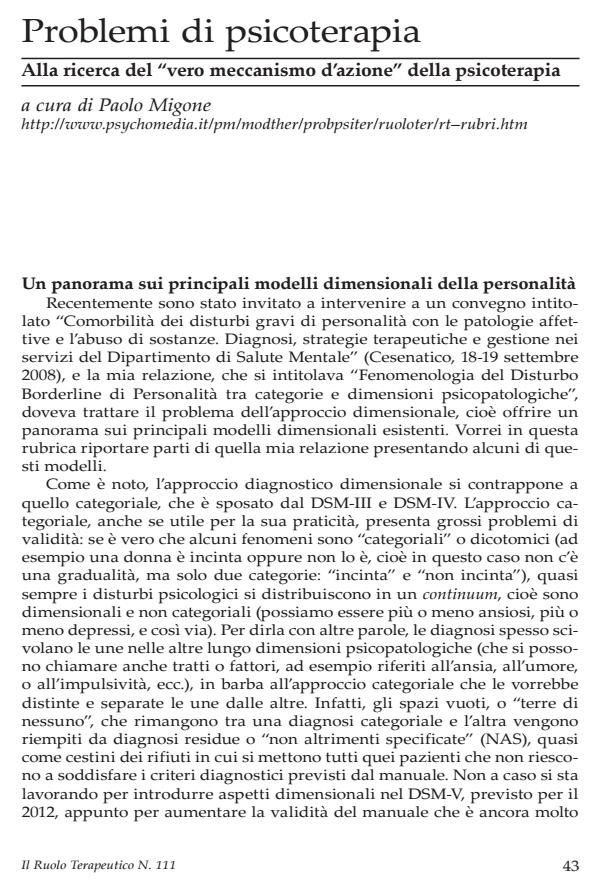Problemi di psicoterapia
Journal title RUOLO TERAPEUTICO (il)
Author/s Paolo Migone
Publishing Year 2009 Issue 2009/111
Language Italian Pages 17 P. 43-59 File size 330 KB
DOI 10.3280/RT2009-111007
DOI is like a bar code for intellectual property: to have more infomation
click here
Below, you can see the article first page
If you want to buy this article in PDF format, you can do it, following the instructions to buy download credits

FrancoAngeli is member of Publishers International Linking Association, Inc (PILA), a not-for-profit association which run the CrossRef service enabling links to and from online scholarly content.
An overview on the main dimensional models of personality - After an introduction on the dimensional approach in personality diagnosis and on its use as an attempt at solving some of the problems of categorical diagnoses (such as those of DSM-III and DSM-IV), the main dimensional models of personality are presented, namely: 16 PF Questionnaire by Cattell, Eysenck Personality Inventory (EPI), Five-Factor Model (FFM) by Costa & McCrae (Big Five), Temperament and Character Inventory (TCI) by Cloninger, Schedule for Nondaptive and Adaptive Personality (SNAP) by Clark, Dimensional Assessment of Personality Pathology - Basic Questionnaire (DAPP-BQ) by Livesley, Structural Analysis of Social Behavior (SASB) by Benjamin, the "fundamental polarity (anaclitic and introjective) of personality" by Blatt, Shedler-Westen Assessment Procedure (SWAP). Finally, advantages and disadvantages of dimensional models are discussed, with particular emphasis on borderline disorder.
key words: personality, dimensional models, categorical model, borderline, diagnosis
Paolo Migone, Problemi di psicoterapia in "RUOLO TERAPEUTICO (il)" 111/2009, pp 43-59, DOI: 10.3280/RT2009-111007